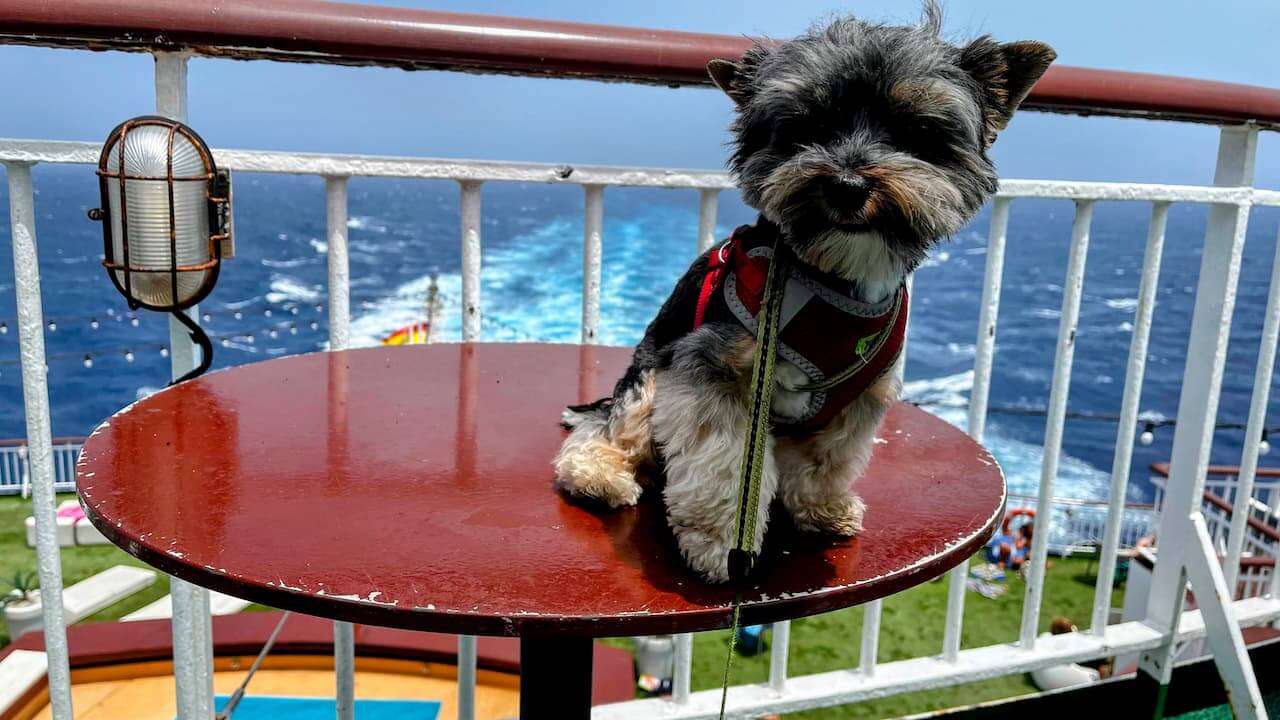Travelling With a Dog on Stena Line Ferries
Travelling with our furry friends can be a delightful experience when we choose the right mode of transport. In this article, we will discuss travelling with a dog on Stena Line ferries. The article covers “do’s”, “don’t’s” and a few more general tips, to ensure that you and your pet are fine at the end.
Key Takeaways
- Booking a pet-friendly cabin ensures the most comfortable journey for both pet owner and dog.
- If you are travelling in the regular or Pullman seats, your dog (even if it’s a small breed) will have to stay in a cage on the car deck. There are regular walking hours, but Stena Line staff may be flexible and allow you to walk your pet more frequently outside official slots. Be friendly with staff, and don’t hesitate to ask.
- DO NOT ever consider leaving your dog in a car. You might not have easy access to the car if the pet is in distress, like, on sunny days.
Introduction
In this article, I will answer your questions about travelling with a dog on Stena Line ferries. The information is based on my own experience of taking the ferry in the Liepaja – Travemunde route (Latvia-Germany).
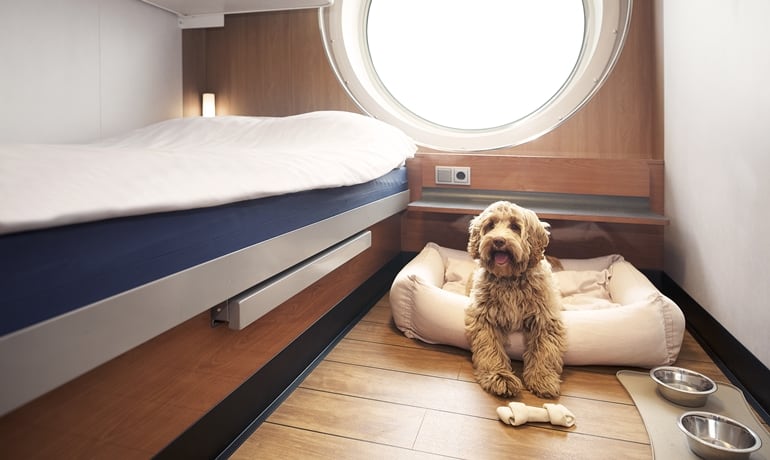
If you have bought the dog-friendly cabin, things will be much simpler for you. All the dog-friendly cabins are located on the same floor in the same corridor, and you can walk your dog and let it pee and poop when necessary.
Hence, the rest of the article will mostly focus on travel when you haven’t bought the dog-friendly cabin, and your dog has to stay in one of the cages.
Premises for dogs
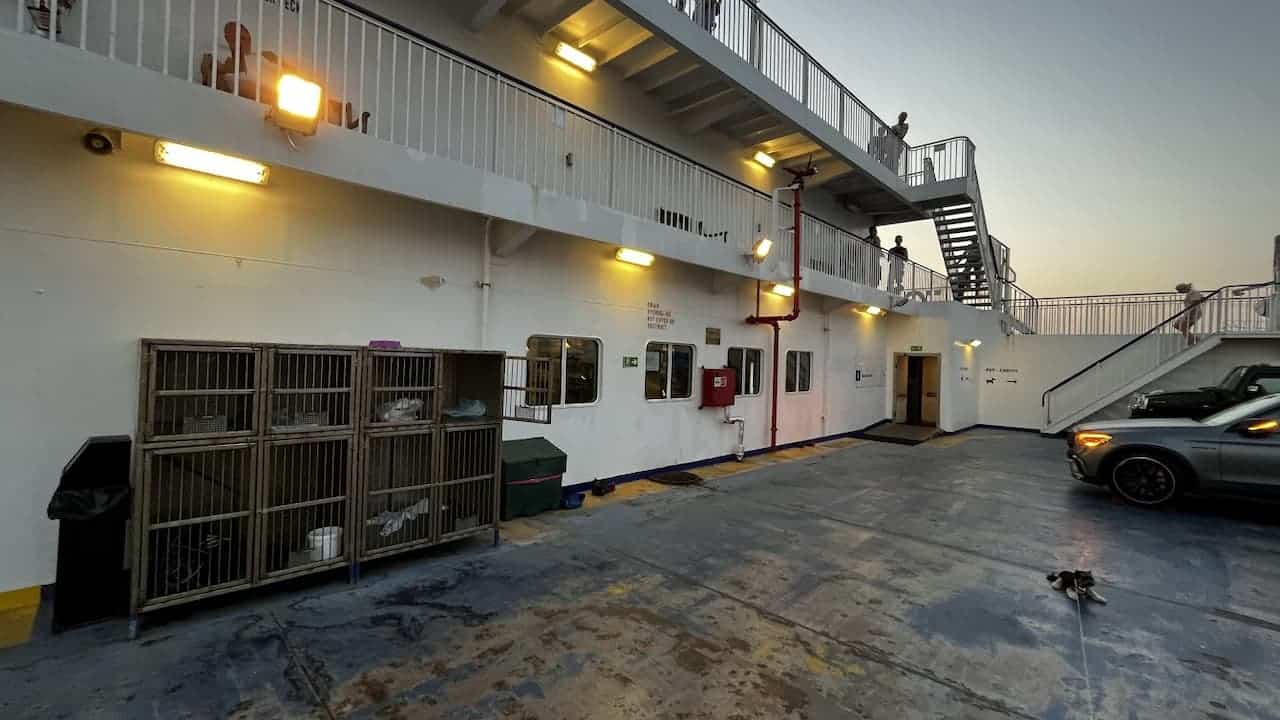
This is what the public dog cages looked like on our Stena Line ferry in the Liepaja – Travemunde route. They are located on the same top-deck as the passenger cars.

For comparisons sake, I wish that Stena Line would implement something similar to what Naviera Armas has on the Huelva – Canary Islands route. The difference is quite large, as the latter dog kennels had air conditioning in them, staff regularly checked if the dogs are watered, and the dogs were away from the parking lot and the regular hustle and bustle of the ferry… but I digress.
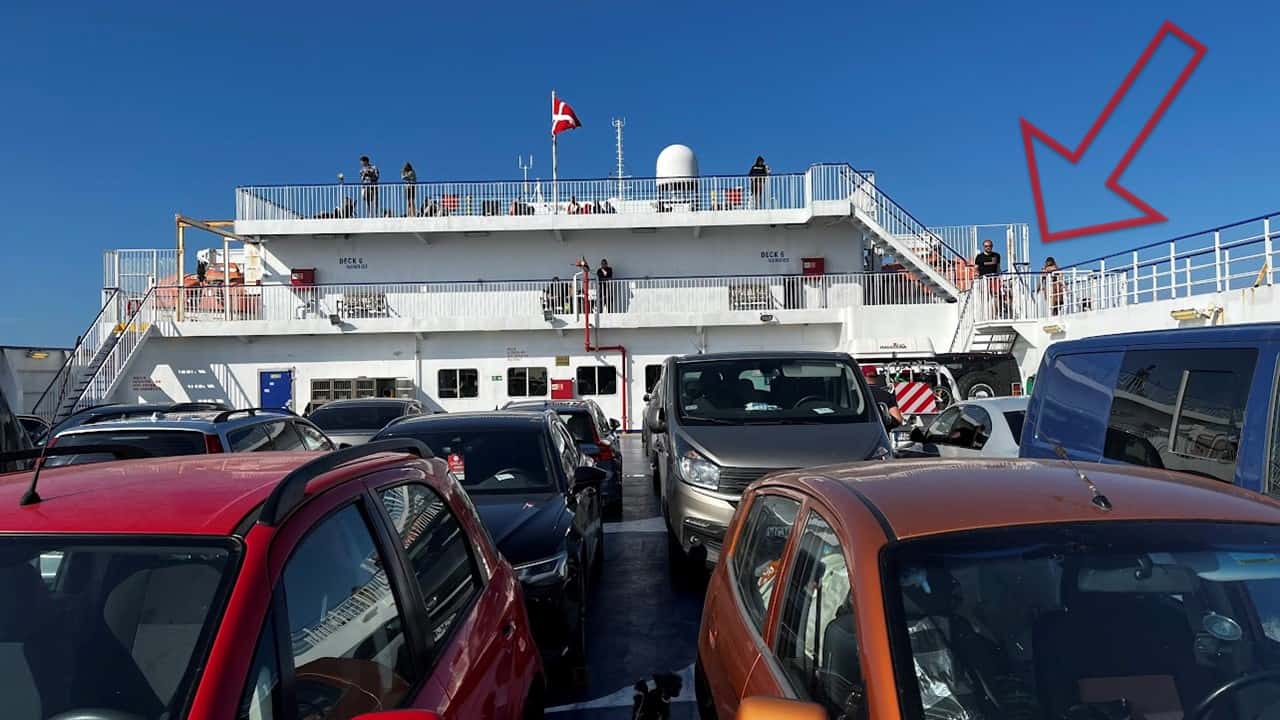
If you have bought the dog-friendly cabin, you can also walk your dog any time on the “balcony” in front of the dog-friendly cabins area. If you do not have the designated cabin, you can walk your dog only in the car deck parking area and only during designated times, unless you arrange an individual visit with a staff member.
If we’d take Stena Line ferries with a dog again, we would definitively go for the dog friendly cabins even though they cost quite a bit extra. I’m still a bit sorry for the experience I made my tiny dog go through. In our case we made the booking too late and all dog-friendly cabins were sold out.
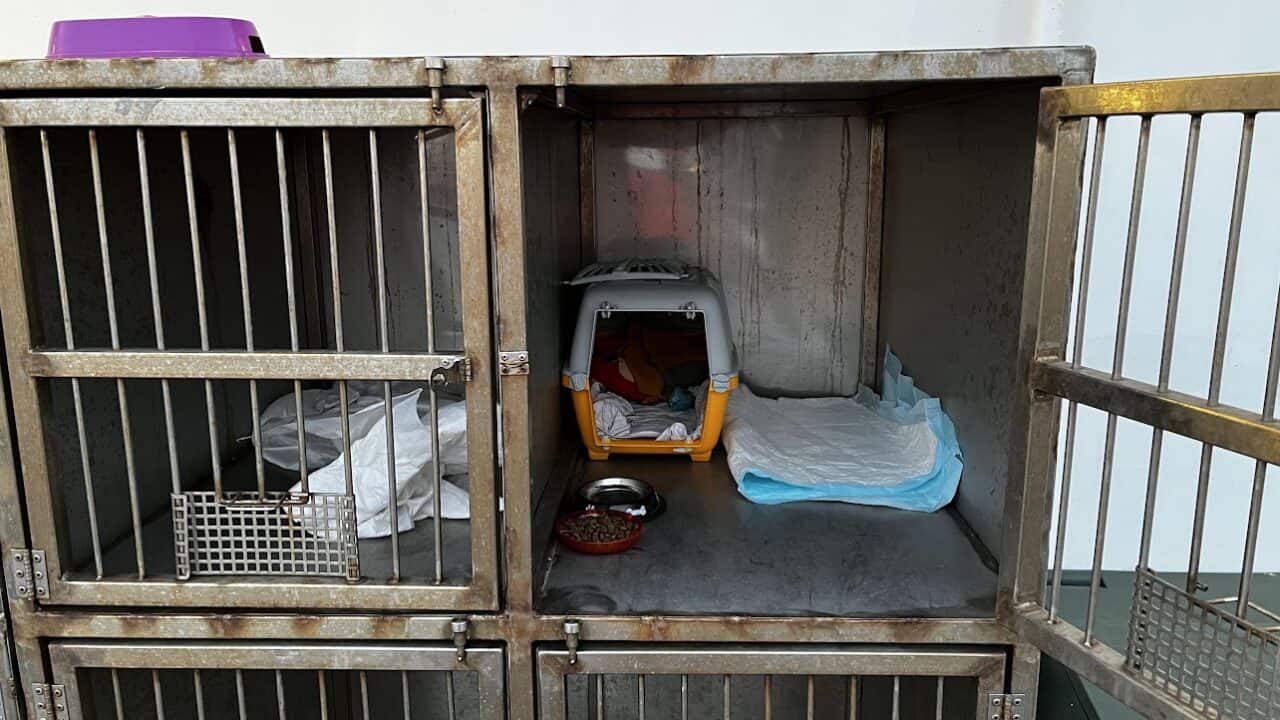
If you end up leaving your dog in the cages for any reason, try to at least make it comfortable for your animal by bringing along a transport cage he know, some toys or other familiar items.
My dog stayed on deck and it was fine at the end, also thanks to the extra visits and walks allowed by staff. However, I was stressed in the evening of departure that I couldn’t visit my dog to check on him and couldn’t even see how he’s doing in the cage.
While he seemed to be very calm in the morning when I went to get my dog, it was a stressful ride for him. The ferry staff noticed that he is shivering and actually invited me to see, pet and walk him, which was a very kind gesture. After the initial pleasant “contact” with staff, I was able to visit my dog more frequently then officially allowed.
While our experience was on the Liepaja-Travemunde route, travellers can expect similar dog-walking hours on other Stena Line routes, such as Harwich, Liverpool, and Holyhead. The Irish Sea route may have some differences in boarding requirements and pet cabins, due to a recent ban on pets in passenger areas. Nonetheless, the staff Stena Line staff seem to be train to observe a high standard of animal welfare.
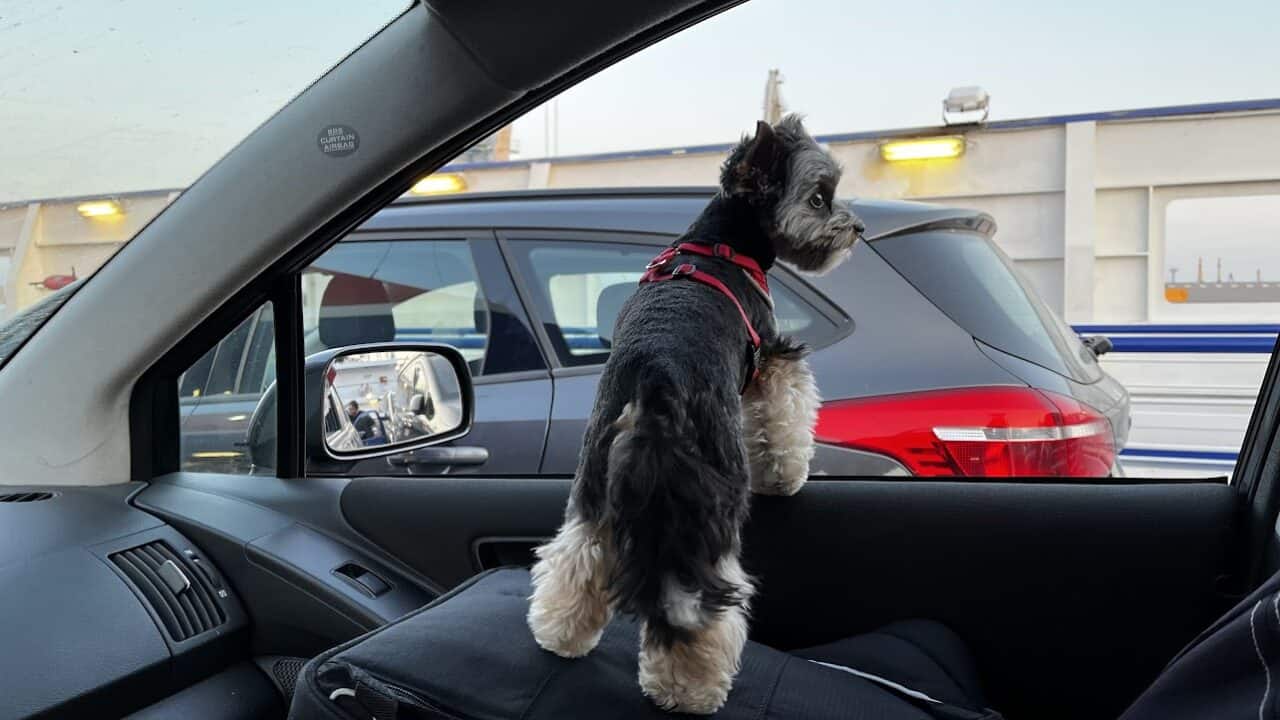
Dog-walking hours
The travel time of my ferry was ~18 hours (from 22:00 to 17:30 the next day), but you actually spend more time on the ship due boarding and disembarkation. The ferry boarding is finished by around 21:30. The official dog-walking hours were as follows on the Liepaja-Travemunde route, and you can expect similar intervals on other Stena Line routes:
- 21:00-21:30 on day 1
- 9:30-10:00 on day 2
- 13:30-14:00 on day 2
A staff member has to accompany any passenger who’s on the car deck which also serves as dog walking area when the ferry is in motion. It was possible to agree with staff members on more frequent visits, but that depends on their availability as the staff member has to let you through the door and be present while you take care of our dog.
My personal experience was super positive with this, to the point where staff checked themselves if my dog Jamie was ok, and once even invited me over for an extra visit then they thought the dog needed some attention. This was super nice, and I’m still very appreciative for the kind gesture!
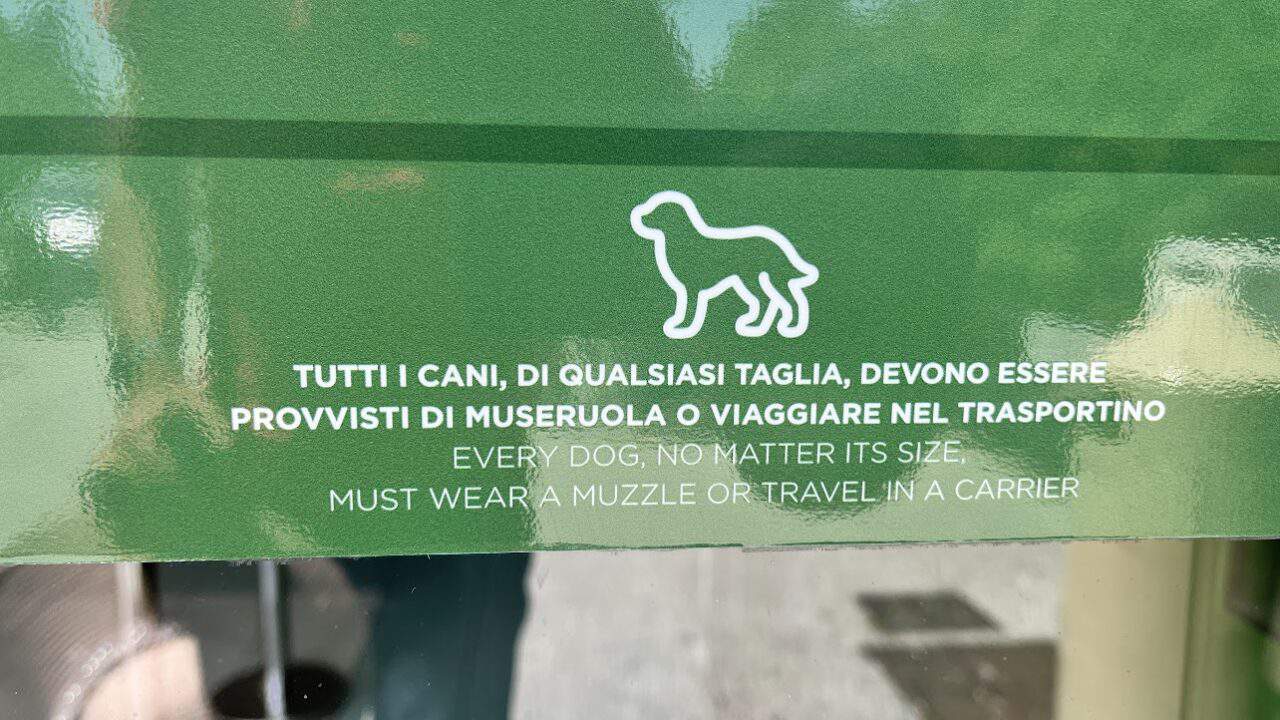
Dog safety
- DO NOT leave the dog in your car. Even if you think that it might be less stressful for your dog to stay in the vehicle, do not leave your dog in the car because the cars are under direct sunlight and will heat up significantly. The sea breeze will not be enough to sufficiently cool the interior. Also – many car alarms went off during the ride, so it will be stressful for the animal if there’s a nearby source of loud sound.
- Watch out of other dogs, as they are more stressed than usual. Even if your dog is friendly with other dogs during walking hours, other dogs might be stressed and behave more aggressively than usual. Withdraw your dog from other dogs at the first signs of aggressive behaviour.
- Let your dog go hungry before the start and 1st half of the trip. The ferry is quite large and stable. However, if the sea if rough, our veterinarian advised not to feed the dog several hours before departure in case the pet gets sea sickness.
- Feed only basic food the dog is used to, no treats. Do not experiment with food and do not give new food brands or extra snacks 2 days before the ferry trip. The dog might be stressed anyway, so why add an unnecessary diarrhoea on top of everything else.
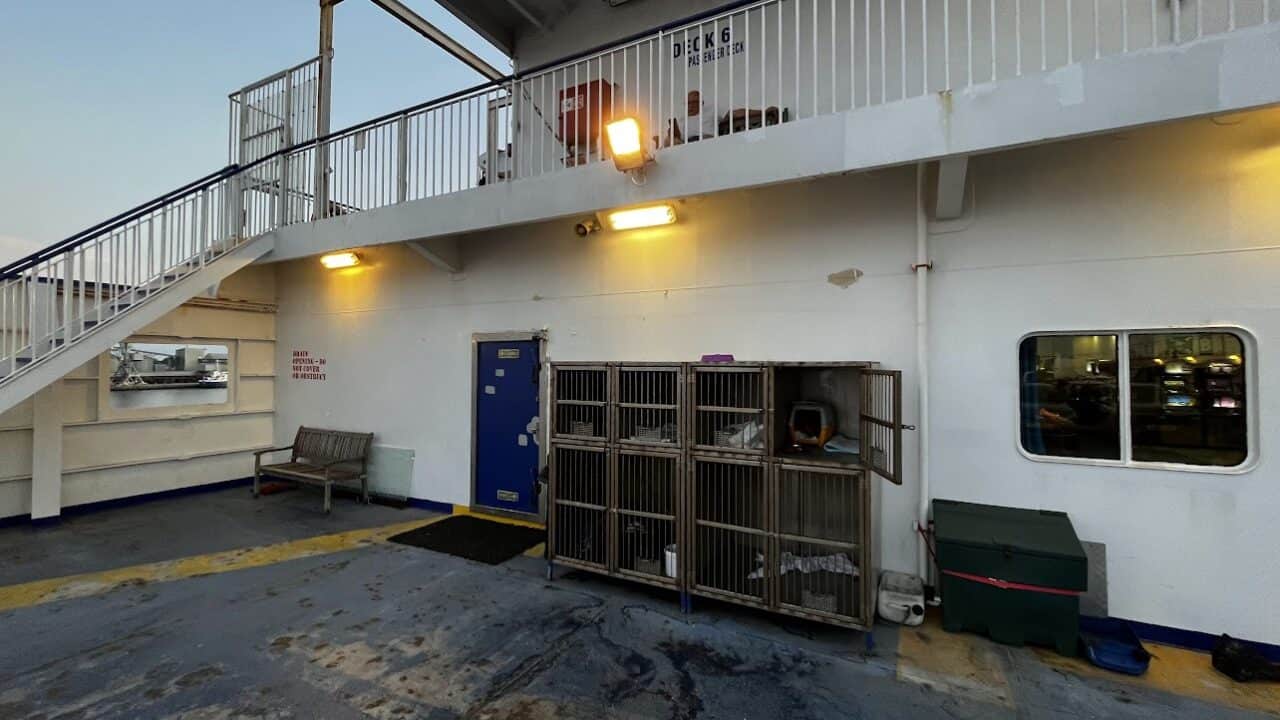
Are dogs allowed to pee and poop on Stena Line ferries?
Yes, dogs are allowed to pee and poop when they are walked in the designated areas. These are the areas on front of the car deck cages and in front of the dog-friendly cabins.
You are supposed to collect your dog’s poop and dispose it in the nearest trash bin. Pee just stays there. I assume staff hose pee down after each trip.
Costs
You can check the current costs of a dog-friendly Stena Line cabin on their website.
If you don’t want to or can’t get a pet-friendly cabin, a space in the car deck cage cost 15 EUR per trip. The payment secures you a place in the dog cage, and the right to walk your dog on the deck during the walking hours. Even if you are on a budget, do always get the 15 EUR pet ticket and DO NOT consider leaving your dog in the car – see section on dog safety.

Dog travel documents and other preparations
If you travel with a dog, you are supposed to have a “pet passport”.
Dog owners are also obliged to get a “fit to travel” note from their vet in the pet passport shortly before travel. We were told that the “fit to travel” remark is valid only for five days after issue. Be aware of this if your travels last longer than that.
My experience and a brief survey among my acquaintances who’ve travelled with dogs allows to conclude that both ferry and airline staff are quite lax about checking compliance with all pet travel rules, and usually let you board if you at least have the pet passport. However, there was one case where a friend was denied boarding as the dog didn’t have the “fit to travel” remark in his pet passport. So better to be diligent than sorry and have to rebook your flight at a later date after a rushed visit to the vet.

Checklist of formal requirements
If you plan to travel with your pet on a ferry or an airplance, you should plan ahead, preferably, 2-3 months in advance. Here’s a checklist to think about, but do also discuss the issue with your vet and check if there might be additional destinaiton-specific requirements:
- Pet Passport: This is a crucial document for all dog travels. It serves as your dog’s official identification and records the vaccinations, including the rabies vaccination.
- Fit-to-Travel Note: Acquire a “fit to travel” note from your vet. Ensure it’s included in your dog’s pet passport or issued as a separate document. This note confirms your dog is healthy enough to travel and is typically valid for five days after issue.
- Tapeworm Treatment (if applicable): Dogs entering the UK and certain other countries are required to have tapeworm treatment. This treatment and its date should be recorded in the pet passport.
- Destination-specific requirements: Be serious about checking the customs and veterinarian requirements, as well as social norms in the countries you are transiting and arriving at. There might be things to take care of that are not typical for the US or European Countries, and social norms that don’t value pets. In case of adversarial obstacles, consider leaving your pet at home.

Checklist of dog hygene and welfare items
The part of the top deck where passenger cars are parked is not accessible to passengers after port departure, except during the official dog walking hours or if a staff member accompanies you individually. For this reason, be sure to take all things you think you might need for yourself and the dog with you when you leave the car.
Here’s a checklist of things I’d advise to take along for your dog’s comfort in order of priority:
- Pet carrier or cage: If our dog is used to sleeping in a cage, we should bring it for their comfort.
- Harness and leash: Useful for controlling and securing our dog during the journey.
- Food, water, and bowls: Essential for our dog’s nourishment and hydration.
- Poop bags: To clean up after our dog in a responsible manner.
- Dog blanket or clothing: To keep them warm and comfortable in colder weather.
- Toys: For entertainment and distraction during the trip.
- Snacks: Chewy, hard to bite, and hard-to-swallow treats are great for keeping them occupied.
Have you got questions that were not answered in the article? If so, please write a comment and I’ll not only answer it, but also update the article for other readers.
Frequently Asked Questions
Are pets allowed on Stena Line ferries?
Yes, pets are allowed on Stena Line ferries. However, all pets must be pre-booked into a pet-friendly cabin onboard.
What are the requirements for travelling with a dog on Stena Line?
To travel with a dog on Stena Line, you need to pre-book a pet-friendly cabin for your journey. These cabins can be booked on the “Cabins” step of the booking process or via their Contact Centre.
Where do dogs stay during the journey on Stena Line ferries?
Dogs stay in pet-friendly cabins during the journey. On Stena Vision, for example, there are no dog lodges or kennel facilities. You can bring up to 2 pets into your cabin when pre-booked.
Are there any additional fees for travelling with a dog on Stena Line?
Additional fees may apply for travelling with a dog on Stena Line. It is best to check the specific fees and charges when you book your pet-friendly cabin.
Can I accompany my dog throughout the Stena Line ferry journey?
Yes, you can accompany your dog during the journey as they will be staying in the pet-friendly cabin with you. This allows you to keep an eye on your pet and make sure they are comfortable throughout the journey.
By the way, Jamie, the dog in the pictures, has his own Instagram channel. You can follow Jamie the Biewer Terrier here for his most Insta-worthy pics. 🙂

